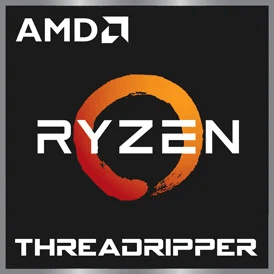Intel Core i7 7700K vs Intel Core i7 12700
We compared two desktop CPUs: Intel Core i7 7700K with 4 cores 4.2GHz and Intel Core i7 12700 with 12 cores 2.1GHz . You will find out which processor performs better in benchmark tests, key specifications, power consumption and more.
Main Differences
Intel Core i7 7700K 's Advantages
Higher base frequency (4.2GHz vs 2.1GHz)
Intel Core i7 12700 's Advantages
Released 5 years late
Better graphics card performance
Higher specification of memory (4800 vs 2400)
Larger memory bandwidth (76.8GB/s vs 35.76GB/s)
Newer PCIe version (5.0 vs 3.0)
Larger L3 cache size (25MB vs 8MB)
More modern manufacturing process (10nm vs 14nm)
Lower TDP (65W vs 91W)
Score
Benchmark
Cinebench R23 Single Core
Intel Core i7 7700K
1209
Intel Core i7 12700
+54%
1868
Cinebench R23 Multi Core
Intel Core i7 7700K
5881
Intel Core i7 12700
+250%
20599
Geekbench 6 Single Core
Intel Core i7 7700K
1557
Intel Core i7 12700
+59%
2491
Geekbench 6 Multi Core
Intel Core i7 7700K
5260
Intel Core i7 12700
+144%
12863
Blender
Intel Core i7 7700K
102
Intel Core i7 12700
+175%
281
Geekbench 5 Single Core
Intel Core i7 7700K
1129
Intel Core i7 12700
+59%
1799
Geekbench 5 Multi Core
Intel Core i7 7700K
4705
Intel Core i7 12700
+166%
12519
Passmark CPU Single Core
Intel Core i7 7700K
2712
Intel Core i7 12700
+44%
3921
Passmark CPU Multi Core
Intel Core i7 7700K
9594
Intel Core i7 12700
+221%
30858
General Parameters
Jan 2017
Release Date
Jan 2022
Intel
Manufacturer
Intel
Desktop
Type
Desktop
x86-64
Instruction Set
x86-64
Kaby Lake
Core Architecture
Alder Lake
i7-7700K
Processor Number
i7-12700
LGA-1151
Socket
LGA-1700
HD Graphics 630
Integrated Graphics
UHD Graphics 770
Package
14 nm
Manufacturing Process
10 nm
91 W
Power Consumption
65 W
-
Max Turbo Power Consumption
180 W
100 °C
Peak Operating Temperature
100°C
CPU Performance
4
Performance Cores
8
8
Performance Core Threads
16
4.2 GHz
Performance Core Base Frequency
2.1 GHz
4.5 GHz
Performance Core Turbo Frequency
4.8 GHz
-
Efficiency Cores
4
-
Efficiency Core Threads
4
-
Efficiency Core Base Frequency
1.6 GHz
-
Efficiency Core Turbo Frequency
3.6 GHz
4
Total Core Count
12
8
Total Thread Count
20
42 MHz
Bus Frequency
100 MHz
100x
Multiplier
21x
64 K per core
L1 Cache
80 K per core
256 K per core
L2 Cache
12 MB shared
8 MB shared
L3 Cache
25 MB shared
Yes
Unlocked Multiplier
No
Memory Parameters
DDR4-2400, DDR3L-1600
Memory Types
DDR4-3200, DDR5-4800
64 GB
Max Memory Size
128 GB
2
Max Memory Channels
2
35.76 GB/s
Max Memory Bandwidth
76.8 GB/s
No
ECC Memory Support
Yes
Graphics Card Parameters
true
Integrated Graphics
true
350 MHz
GPU Base Frequency
300 MHz
1150 MHz
GPU Max Dynamic Frequency
1500 MHz
192
Shader Units
256
24
Texture Units
16
3
Raster Operation Units
8
24
Execution Units
32
15 W
Power Consumption
15 W
4096x2304 - 60 Hz
Max Resolution
-
0.44 TFLOPS
Graphics Performance
0.78 TFLOPS
Miscellaneous
3.0
PCIe Version
5.0
16
PCIe Lanes
20
SSE4.1, SSE4.2, AVX-2
Extended Instruction Set
-




